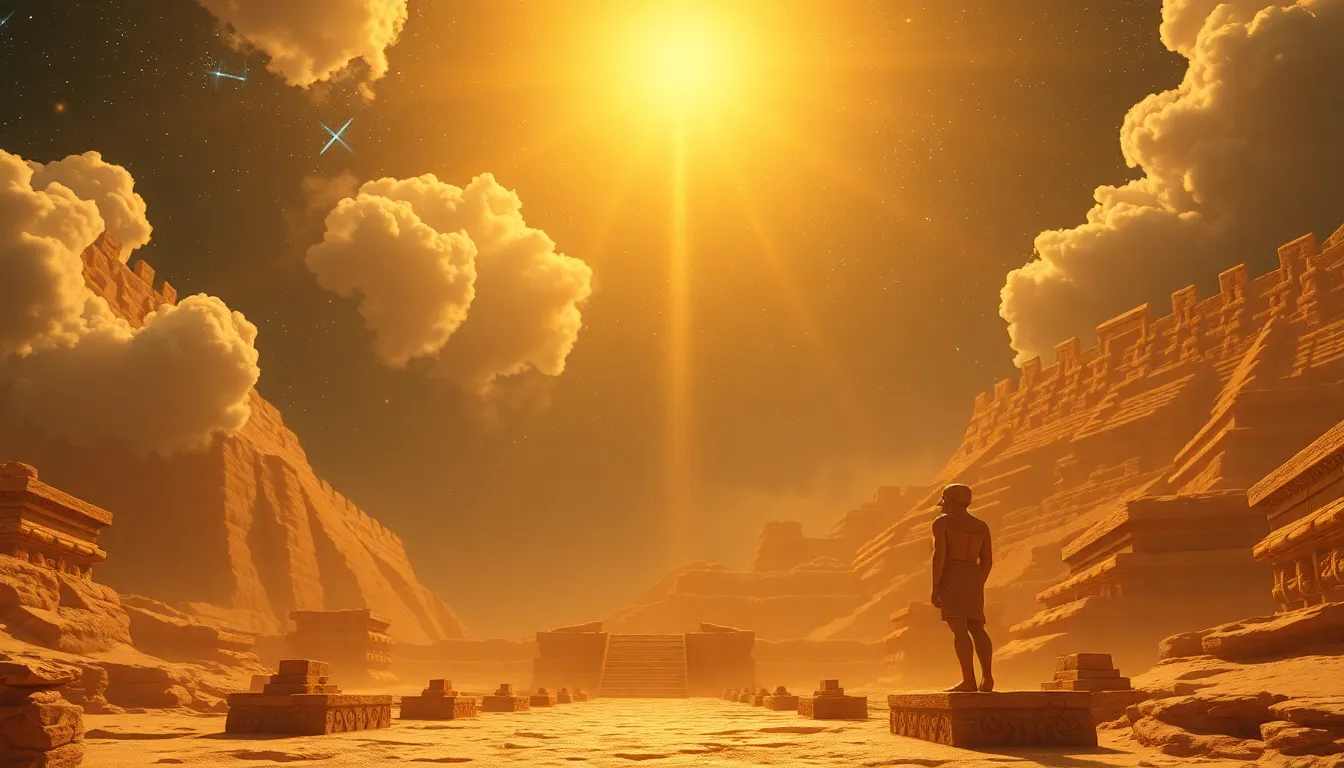The Cosmic Journey of the Soul: Myths of Ascension in Ancient Egypt
I. Introduction
In Ancient Egyptian culture, the soul was not merely an abstract concept but a fundamental aspect of existence that dictated one’s life and fate in the afterlife. The Egyptians believed in a complex spiritual system where the soul’s journey post-death was of utmost significance. This journey, often referred to as ascension, represented a transition to a higher state of being, one that allowed the deceased to join the gods and enjoy eternal life in the Field of Reeds.
Ascension was paramount in Egyptian mythology, intricately tied to their beliefs about death, the afterlife, and the divine. The myths surrounding this journey offered profound insights into their understanding of life, emphasizing the importance of living virtuously to ensure a favorable passage to the afterlife.
II. The Ancient Egyptian Understanding of the Soul
The Ancient Egyptians conceptualized the soul as a composite of several elements, primarily the Ka, Ba, and Akh. Each component played a distinct role in the journey of the soul:
- Ka: The Ka represented the life force or spiritual double of the individual. It was believed to require sustenance, which is why offerings were made to the deceased.
- Ba: The Ba was the personality or the individual essence that could travel between the living and the dead. It was often depicted as a bird with a human head, symbolizing its ability to move freely.
- Akh: The Akh was the transformed spirit, representing the soul’s effective union with the divine after successful judgment. It is the form that could interact with the gods.
Central to the afterlife journey was the heart, which the Egyptians considered the seat of emotion, thought, and intention. During the weighing of the heart ritual, the heart was placed on one side of a scale against the feather of Ma’at, the goddess of truth and justice. If the heart was lighter than the feather, the soul was deemed worthy of ascension; if heavier, it was devoured by Ammit, the eater of souls.
III. Key Myths of Ascension
Numerous myths encapsulate the ancient Egyptians’ beliefs regarding the soul’s journey and ascension. Among the most notable are:
- The Story of Osiris: Osiris, the god of the afterlife, embodies the cycle of death and resurrection. After being murdered by his brother Set, Osiris was resurrected by his wife, Isis, symbolizing hope and the possibility of rebirth. His story illustrates the belief that death is not the end but a transformative process leading to eternal life.
- The Myth of Ra: Ra, the sun god, undertook a daily journey through the underworld, known as Duat, to be reborn each morning. This journey symbolizes the cyclical nature of life and death, reinforcing the connection between the physical and spiritual realms.
IV. The Role of Deities in the Ascension Process
The guidance of deities was crucial in navigating the journey of the soul after death. Key figures included:
- Osiris: As the ruler of the afterlife, Osiris judged the souls of the deceased, determining their fates.
- Isis: The devoted wife of Osiris, Isis played a protective role, aiding souls on their journey.
- Anubis: The jackal-headed god, Anubis, oversaw the embalming process and guided souls through the underworld, ensuring they reached Osiris safely.
Rituals and offerings were performed to honor these deities, believed to facilitate a smoother transition for the deceased into the afterlife.
V. The Underworld: Duat and Its Challenges
Duat, the Egyptian underworld, was a complex realm filled with challenges that souls had to navigate to achieve ascension. It was depicted as a dark, chaotic place filled with obstacles, including:
- Dangerous creatures that could hinder or devour the unworthy.
- Trials meant to test the soul’s virtue and knowledge.
- The necessity of reciting specific spells and prayers to overcome adversity.
The journey through Duat was not merely a physical passage but a metaphorical one, representing the trials one must overcome to achieve spiritual enlightenment and unity with the divine.
VI. Rituals and Practices Supporting Ascension
The Egyptians employed various funerary practices to support the ascension of the deceased. Key practices included:
- Mummification: This elaborate process preserved the body, ensuring the soul had a vessel for the afterlife. It was believed that the Ka would need the physical body to exist in the afterlife.
- Tomb Construction: Tombs were built as elaborate resting places, equipped with goods, food, and offerings necessary for the deceased’s journey.
- The Book of the Dead: This collection of spells and prayers served as a guide for the deceased, helping them navigate the challenges of the underworld and ensuring a successful transition to the afterlife.
VII. Symbolism and Art Depicting the Cosmic Journey
Ancient Egyptian art and hieroglyphs play a crucial role in illustrating the concepts of the soul and ascension. Common themes included:
- Hieroglyphs: Many hieroglyphs depicted the soul’s journey, often showing the weighing of the heart or scenes of the afterlife.
- Cosmic Symbolism: Imagery such as the sun, stars, and lotus flowers represented rebirth and the eternal cycle of life, reinforcing the belief in ascension.
These artistic representations served not only as decoration but as essential components of the spiritual landscape, guiding souls and commemorating their journeys.
VIII. Conclusion
Ancient Egyptian beliefs regarding the soul and ascension have left an indelible mark on contemporary understandings of life and death. The intricate myths, deities, and rituals highlight a profound respect for the spiritual journey that transcends physical existence. Today, these beliefs resonate with modern spiritual and philosophical contexts, reminding us of the universal quest for meaning and the hope for life beyond death.
As we reflect on the cosmic journey of the soul in Ancient Egypt, we are reminded of the enduring nature of these ideas, which continue to inspire and influence our understanding of existence and the afterlife.




